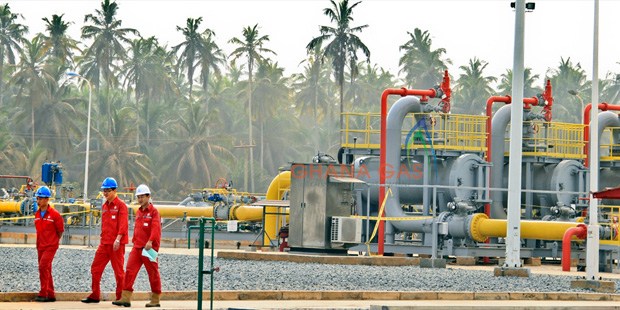The Public Interest and Accountability Committee (PIAC) and the Institute for Energy Security (IES) want government to address what they describe as “unsustainable indebtedness” to the Ghana National Gas Company (GNGC).
At the end of 2019, the Volta River Authority (VRA) and other players in the energy space owed GNGC US$865.57 million for gas bought – and given the importance of liquidity to the power sector, PIAC believes that government must intervene in order to ensure sustainability of the energy sector.
The Committee described the role of Ghana Gas in the energy sector as “key”, because it supplies gas to power producers, and is of the view that failure to address the problem could have dire consequences for the sector, particularly power generation, while the IES is warning against liquidity crisis and another legacy debt.
Meanwhile, the company’s predicaments go beyond the money others owe to it. For instance, GNGC owes the Ghana National Petroleum Corporation (GNPC) US$668million, relating to the supply of 20,805.71 MMSCF of gas in 2019.
In addition to the GNPC debt, Ghana Gas also owes the Public Utilities Regulatory Commission (PURC) US$83million in regulatory levies. “This includes an outstanding amount of US$74million from previous years, and a 2019 debt of US$10million,” PIAC said in its 2019 annual report.
Set against its receivables of US$866million, GNGC, the report added, is fully capable of honouring its debt obligations should its debtors pay their debts. However, the rate of debt accumulation and indebtedness to GNGC – resulting from gas bought from GNPC and gas supplied power producers could increase in 2020 – remains a concern for PIAC.
PIAC’s Technical Manager, Mark Agyemang, lamented that the state-owned gas processor’s growing debt is becoming unsustainable and therefore requires government’s attention to avert an impending crisis.
To the IES, the liquidity problems faced by GNGC do not bode well for the entire energy sector. Its Executive Director, Paa Kwasi Anamua Sakyi, believes that the situation if not addressed could impact negatively on gas supply to thermal power producers, and consequently electricity supply.
“They [Ghana Gas] form a very key point in our power generation, knowing very well that Ghana Gas supplies the cheapest form of fuel for the power sector. So, if there is any form of liquidity challenge that could impact on their operations, it impacts the supply of natural gas,” Mr. Anamua Sakyi told the B&FT.
He said liquidity remains key because it determines reliability of power supply, and that back in 2015-2016 when the country experienced erratic power supply the problem was not about installed capacity but money to fuel and fire generation plants.
Although today almost all generation plants are dual-fuel fired – liquid and gas fuels, he said gas remains the wisest choice because it is relatively cheaper than liquid fuel. “That is why we think that Ghana Gas is a key determinant in our power supply. So, it is very important that we address the issues confronting Ghana Gas so as to be assured of adequate and reliable supply of natural gas; if not, dumsor is not far from us.”
The energy sector, apart from the GNGC liquidity constraints, is already debt-ridden with a debt of about US$1.4billion owed to Independent Power Producers (IPP) alone – in addition to the millions owed to the Ghana Grid Company, GRIDCo, among others.
“Today, the ordinary power consumer pays taxes to clear all these debts, but they keep going up every day. How do we fix Tema Oil Refinery if we have this debt in the sector?” he quizzes, adding that whatever is owed GRIDCo, Electricity Company of Ghana, GNGC and the IPPs has an impact on the operations of other players like BOST.
Way forward
To avoid another crisis similar to the legacy debt once owed to bulk oil distributors and which government completed paying in February this year, PIAC and IES want government to be proactive and disciplined in its implementation of the cash waterfall mechanism.
Implementation of the cash waterfall mechanism – a payment system that allows debtors to pay higher-tiered creditors their full interest and principal first before lower-tiered creditors receive their own principal and interest payment – began last April.
The mechanism is part of a wider strategy to ensure an equitable distribution of energy sector revenues to all stakeholders in the value chain, and seeks to put an end to the practice whereby some power producers are given priority over others in terms of financing.










